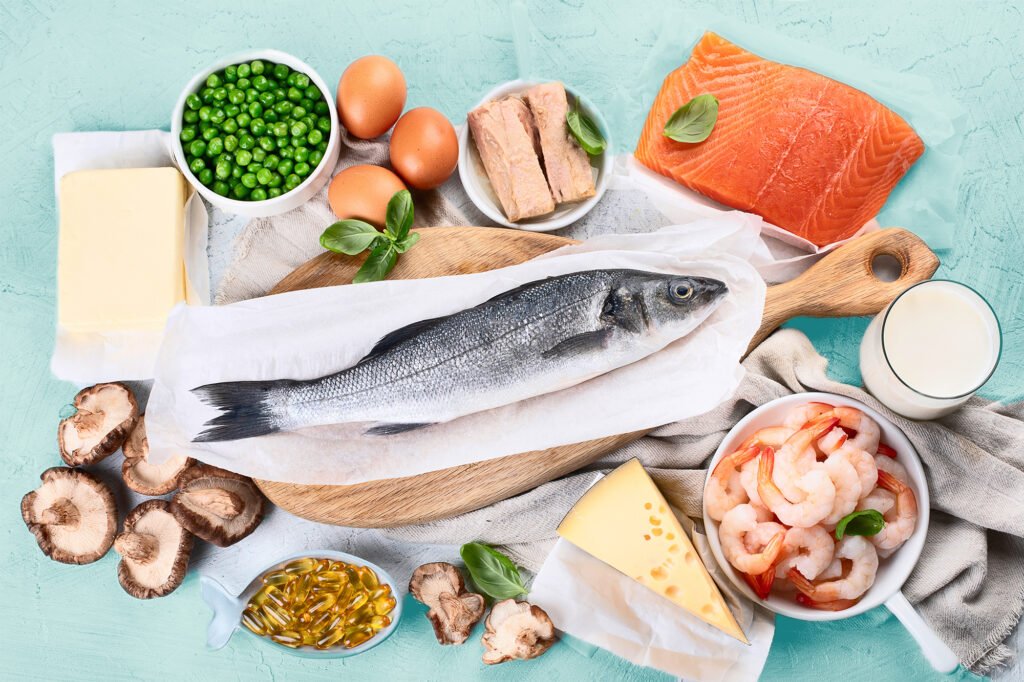We all remember taking vitamins as kids but what exactly are these vitamins and what do they do? This article explains what vitamins are and their functions in the body. We will be taking a closer look at four of these vitamins and their function. And the consequences when we’re deficient in any of them. So let’s get started.
What Are Vitamins?
Vitamins are essential nutrients needed by the body in small amounts to allow it to grow, develop, and function normally. In total, there are thirteen vitamins needed by the body. Vitamins come in two types that are transported and stored differently in the body. These are: water-soluble and lipid soluble vitamins.
Water Soluble Vitamins
They dissolve in water and are able to move around freely in the body through the blood. These vitamins are present in the watery portions of fruits, vegetables, and grains. Water soluble vitamins are not stored in the body. The body takes the vitamins from our food. And the remainder is disposed of through the kidneys. This means that water soluble vitamins need to be regularly replenished as part of our daily diet.
Fat Soluble Vitamins
These vitamins on the other hand, need fat in order to dissolve. These vitamins require special carrier proteins to fro transport in the blood. Unlike water soluble vitamins, fat soluble vitamins are stored in fat cells. when excess vitamin is present in the diet, to be used at a later time.
Now let’s take a look at two water soluble vitamins: vitamins B and C.
Vitamin B

We’ll now be talking about one common water soluble vitamin, vitamin B. There are 8 types of vitamin B and most of them come from our diet. Due to the various types of vitamin B, they are present in a variety of sources. In terms of the roles vitamin B performs two main functions in the human body:
- One: to make energy from the ingested food
- Two :to make red blood cells
Vitamin B Deficiency Diseases
Deficiency in vitamin B can lead to one or more diseases. Depending on the number of types of vitamin B deficiency. For example, deficiency in vitamin B12 and vitamin B6 can cause anemia, which is insufficient red blood cells. On the other hand deficiency in vitamin B1 and B3 can lead to mental confusion.
Vitamin C

Now we will take a look at another water-soluble vitamin, vitamin C. Vitamin C has various functions in the body. One of its most important functions is to protect the body from infections. It also contributes to the growth and repair of tissues. Like your bones, your teeth and your skin.
Sources of Vitamin C
Now, you may be wondering where you can find vitamin C. Well the best sources of vitamin C are fruits and vegetables. Peppers and broccoli have the highest vitamin C content among the many kinds of vegetables. We commonly believe that the oranges are the best source of vitamin C among fruits. However, this is not actually the case. The fruit that is the best source of vitamin C is actually guava. In second place it’s papaya, and kiwis are the third best source of vitamin C among fruits. Oranges are actually the fourth highest.
Vitamin C Deficiency Diseases
So what happens when you don’t consume enough vitamin C? Well vitamin C deficiency can lead to a disease called scurvy. Scurvy was a disease that many pirates and sailors used to have when they were out at sea for long periods of time without access to fresh fruits and vegetables. Scurvy has many symptoms such as brown spots in the skin, bleeding from different mucous membranes, spongy gums, loss of teeth, and even death.
Now let’s look at two fat soluble vitamins: vitamins A and D.
Vitamin A

We will first take a look at vitamin A. Vitamin A’s main role in the body is maintaining and protecting vision. Vitamin A is critical for vision because it’s a component of rhodopsin—a protein that detects and absorbs light in the eyes.
Sources of Vitamin A
There are two main sources of vitamin A. The first, is in foods from animal sources, which includes fish, meat, liver, and eggs. The second, is in leafy green vegetables, orange and yellow vegetables, and fruit. The top three choices are squash, carrot, and spinach.
Vitamin A Deficiency
Deficiency in vitamin A is usually rare since most foods contain at least a small amount of it. Deficiency is more common during periods of high nutritional demand such as during infancy and childhood. One of the most common symptoms of vitamin A deficiency is xerophthalmia. Or the inability to see in low light or in darkness.
Vitamin D

The second fat soluble vitamin we will be talking about is vitamin D. We also know Vitamin D as the sunshine vitamin. Because our skin produces it in response to sunlight. You can also get vitamin D from supplements. And a very small amount comes from some foods like salmon.
Vitamin D works to promote bone growth and bone strength. This is important since vitamin D regulates the absorption of calcium and phosphorus. Which are two essential components for developing the structure and strength of your bones. So, even if you eat lots of foods that contain calcium and phosphorus. Without enough vitamin D you can’t absorb them into your body.
Vitamin D Deficiency Diseases
Vitamin D is also an important factor in making sure your muscles, heart, lungs, and brain work well. And enables the body to fight infection. Too little vitamin D results in the softening of the bone. And this results in rickets in children and osteomalacia in adults.

Conclusion
Vitamins are essential nutrients which our body needs to grow, develop, and function normally. So, now we know two types of vitamins are fat soluble and water soluble vitamins. And we also discussed two water soluble vitamins. Vitamin B produces energy and red blood cells. And vitamin C which is works with tissue growth and repair. Now we also know two fat soluble vitamins. Vitamin A which plays a role in vision and vitamin D which functions in bone growth and strength.

